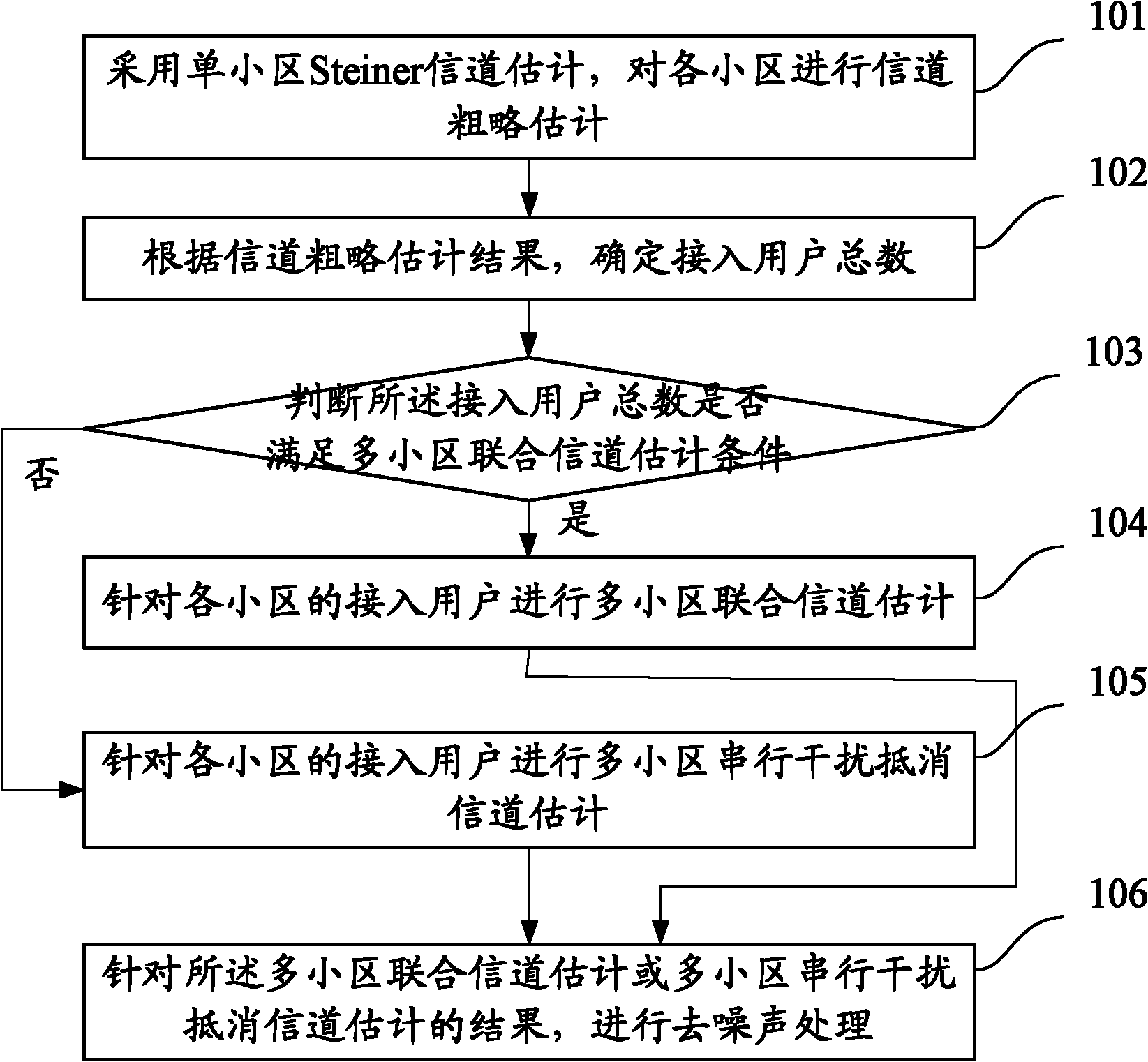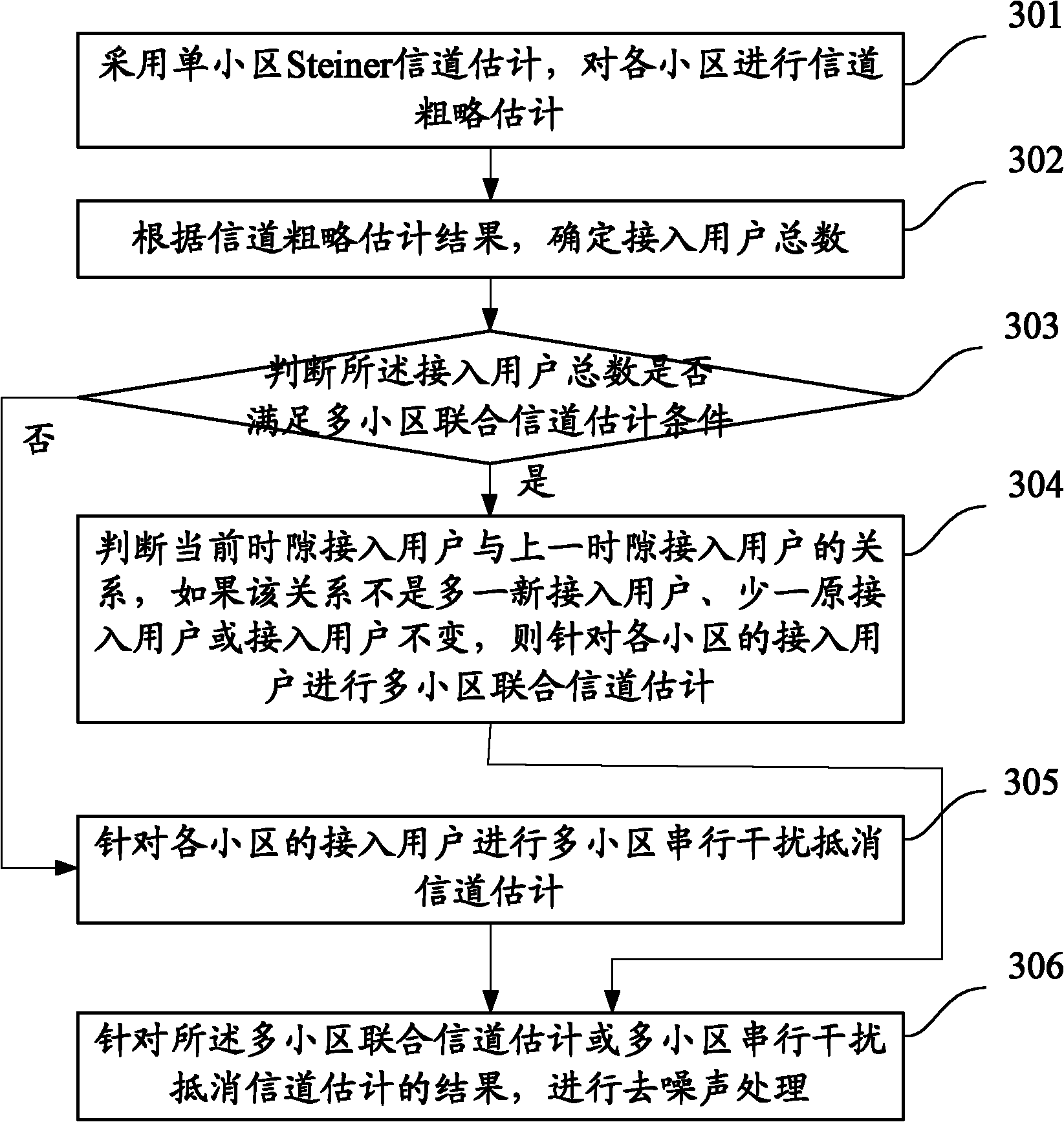A multi-cell channel estimation method in td-scdma system
A TD-SCDMA and channel estimation technology, which is applied in the field of multi-cell channel estimation, can solve problems such as being easily exceeded, harsh conditions, low-rate users being interfered by high-rate users, etc., to improve estimation accuracy, ensure accuracy, and reduce The effect of computational complexity
- Summary
- Abstract
- Description
- Claims
- Application Information
AI Technical Summary
Problems solved by technology
Method used
Image
Examples
Embodiment 1
[0179] Compared with Embodiment 1, this embodiment classifies the access users by judging the relationship between the access users in the current time slot and the access users in the previous time slot, so as to reduce the amount of computation. It should be noted that, if the network is just initialized, the judgment can be omitted, and multi-cell joint channel estimation is directly performed for the access users of each cell; otherwise, judgment is required for classification processing.
[0180] Combine below Figure 4 The flow chart shown in the figure describes in detail the implementation process of multi-cell joint channel estimation for the access users of each cell, which may specifically include:
[0181] Step 401, matched filtering;
[0182] Step 402, correlation matrix construction;
[0183] Step 403, calculating and storing the Cholesky factor of the correlation matrix;
[0184] Step 404, iteratively solving the lower triangular equations;
[0185] Step 405...
PUM
 Login to View More
Login to View More Abstract
Description
Claims
Application Information
 Login to View More
Login to View More - R&D
- Intellectual Property
- Life Sciences
- Materials
- Tech Scout
- Unparalleled Data Quality
- Higher Quality Content
- 60% Fewer Hallucinations
Browse by: Latest US Patents, China's latest patents, Technical Efficacy Thesaurus, Application Domain, Technology Topic, Popular Technical Reports.
© 2025 PatSnap. All rights reserved.Legal|Privacy policy|Modern Slavery Act Transparency Statement|Sitemap|About US| Contact US: help@patsnap.com



